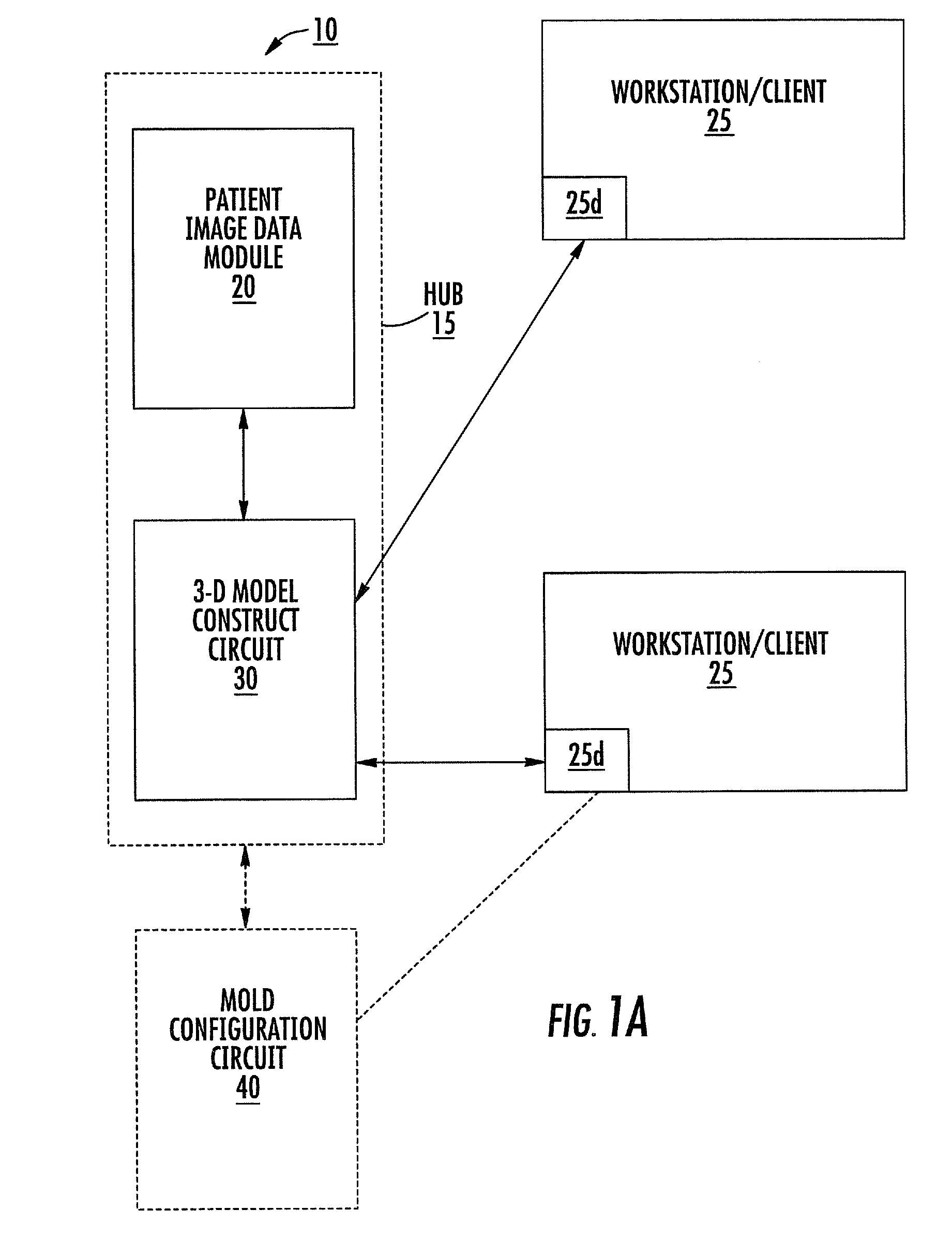Patient-specific spinal implants and related systems and methods
a technology for spinal implants and patients, applied in the field of spinal implants, can solve the problems of pain in legs, loss of muscle strength and control, and displaced or damaged spinal discs, and achieve the effect of ease of implantation in patients
- Summary
- Abstract
- Description
- Claims
- Application Information
AI Technical Summary
Benefits of technology
Problems solved by technology
Method used
Image
Examples
Embodiment Construction
[0015]Embodiments of the invention are directed to providing patient-specific implants that can be custom configured to fit a target space or structure in a patient and / or formed based on patient image data and input from a clinician to customize treatment and / or provide ease of implantation in the patient.
[0016]Embodiments of the invention are directed to methods for generating custom arthoplasty implants, including spinal implants. The methods include: (a) programmatically analyzing a patient's image data to electronically obtain shapes and dimensions of relevant anatomical features of a target region of the patient; and (b) fabricating a patient-specific replacement implant for the patient using the analyzed patient image data.
[0017]In particular embodiments, the implant can be a spinal implant, such as a total disc replacement (TDR), a nucleus, a facet joint or an inter-process spacer and the like.
[0018]In some embodiments, wherein the spinal implant comprises a TDR, the method ...
PUM
| Property | Measurement | Unit |
|---|---|---|
| height | aaaaa | aaaaa |
| width | aaaaa | aaaaa |
| diameter | aaaaa | aaaaa |
Abstract
Description
Claims
Application Information
 Login to View More
Login to View More - R&D
- Intellectual Property
- Life Sciences
- Materials
- Tech Scout
- Unparalleled Data Quality
- Higher Quality Content
- 60% Fewer Hallucinations
Browse by: Latest US Patents, China's latest patents, Technical Efficacy Thesaurus, Application Domain, Technology Topic, Popular Technical Reports.
© 2025 PatSnap. All rights reserved.Legal|Privacy policy|Modern Slavery Act Transparency Statement|Sitemap|About US| Contact US: help@patsnap.com



